
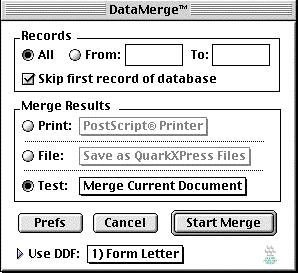
controls over how the merge process
will be executed. This includes such
settings as the range of records to use,
and if the mergeshould be printed or
saved to a file. (Screen capture courtesy
of Meadows Information Systems)
database record to produce a new document. Each new document consists of the static
elements of the template and the variable data from the database. DataMergeprovides the
user with a report that lists the names of the processed files (the template name with se-
quential numbers affixed) and their status (FIG. 9).
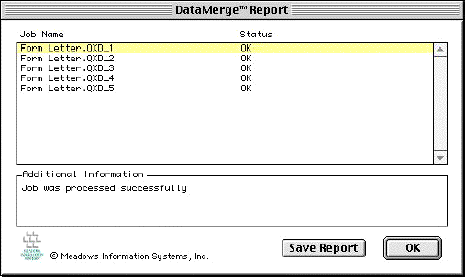

![]() Forms Caching. In the case of most printers, each document page is formed from
Forms Caching. In the case of most printers, each document page is formed from
the mergerof the template and database elements, RIPed, and printed. What is inefficient
about this process is the fact that the template componentsare the same on each and every
document, but are reconstructed again and again nonetheless. This is very inefficient and
results in extending the output processing time.
ows suggests that one method of circumventing the problem is by first printing the docu-
ments with only the fixed template elements, and then reloading the output and printing it
a second time with only the variable data elements. This reduces the overall printing time
and can be accomplished using the DataMergeFormPrint feature in the Print section of the
DataMerge window.
“forms caching” capability. These printers can storethe fixed template elements in memory
and use them in combination with the variable data stream. The printer essentially uses the
stored form, which is called by the vendor-supplied PPD (Adobe PostScript Printer
Description)as a background image which it combines with the database data to generate a
composite print.
printing presses, such as the Xeikon DCP 500 line, with a web speed of 24 ft/min (FIG. 9).
The operatormaintains control of the press through a digital front-end console, which
manages the flow of jobs, press set-up and operation, and other functions (FIG. 10).
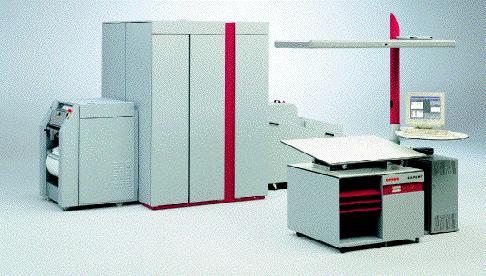
storage capacity for high-volume on-demand variable data printing. The unit includes Xeikon’s Private-I or
Meadow’s DataMergeVariable Data authoring tools. (Photo courtesy of Xeikon)

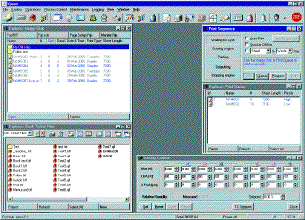
the Xeikon eXpert digital front-end
provides control over the flow of
incoming data and its processing on
press. (Screen capture courtesy of
Xeikon).
![]() Intelligent Processing. One of the most significant problemswith variable data
Intelligent Processing. One of the most significant problemswith variable data
printing is, ironically, the veryfact that the data is variable, and thereforesomewhat unpre-
dictable. If all of the record fields in a database are of uniform length, then designing a
template that will accommodatethem is straightforward. However, this is usually not the
case. This means that there will be instances when database content will not fit into the
boxes that have been created to hold it, resulting in missing or ill-fitting data on the printed
pieces.
First, the user can do a test merge to determine the longest line in each database field (FIG.
11). When this has been done, the user simply modifies the Quark text boxes to accommo-
date the longest lines, and can thus be assured that there will be no overset conditions.
Second, the user can utilize the CopyFit Xtension, which is included with the DataMerge
package (FIG. 12). CopyFit automatically “tightens” the contents of a text box to make it fit
using parametersthat the user sets (FIG. 13). The parametersare only applied in situations
where an overset condition exists.
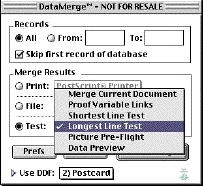
determine the longest or shortest line in each database field.
In addition, the Picture Pre-Flight option allows the user to
ensure that all necessary pictures are available for merging.
(Screen capture courtesy of Meadows Information Systems)